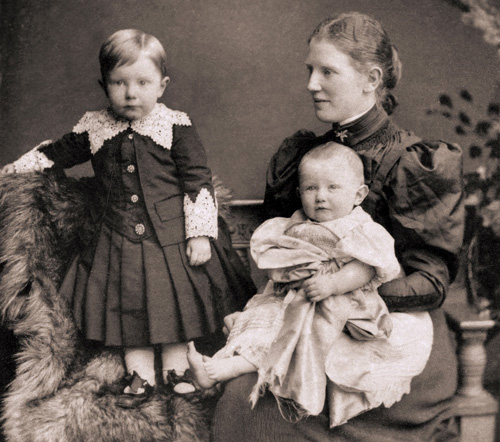A Family at War: The Diary of Mary Martin – Digitised Diary of Mother of First World War Soldier is Launched
Posted on: 03 October 2012
A digitised and transcribed diary, candid and often poignant insight into life for families of Irish soldiers during the Great War was recently launched by Minister for Arts, Heritage and the Gaeltacht, Jimmy Deenihan TD. Written in 1916, a turbulent year in Irish history, the Diary is an account of daily life written by a mother whose son had been reported missing in action. http://dh.tcd.ie/martindiary/.
The Diary ‘A Family at War: Mary Martin’s Diary, 1 January – 25 May 1916’ is an online resource developed and produced by students on Trinity College Dublin’s M Phil in Digital Humanities and Culture, and the Digital Arts and Humanities PhD in UCC, using a manuscript treasure from the collections of the National Library of Ireland. This innovative approach to understanding our cultural heritage will be made freely available online to the public.

Mary Martin with two of her children
Mary Martin, a widow and mother of twelve children, living in the affluent Dublin suburb of Monkstown, began a diary shortly after she received official word that her son Charlie, a soldier with the Royal Dublin Fusiliers, was missing in action on the Salonika front. As she wrote in her first entry on New Year’s Day 1916:
“Since I heard you were missing as well as wounded, it has occurred to me to write the diary in the form of a letter. We hope to hear from you soon. Till then cannot communicate with you & later on when you read this it will you know what has been happening.”
The diary ended on May 25th, 1916, shortly before official word came that Charlie had been killed. Set against the backdrop of the Easter Rising and the First World War, the diary chronicles the daily activities of Mary, her family, friends and relatives. The Mary Martin Diary online includes 132 diary entries that were recorded from January 1- May 25, 1916. Each of these entries has been transcribed and compiled into a searchable database.
The Diary also affords us a rare window onto a fascinating world that too infrequently makes it into the history books or official accounts of a nation’s history. Minister Deenihan notes that “this online edition is a rich source for anyone interested in Irish history, military history, women’s history and genealogy and takes its place within a collection of other publicly-available online resources that shed light on Ireland’s complicated past and the development of the State.”
By developing the manuscript into an online resource this project brings history to everyone. Available 24/7, anywhere in the world, it demonstrates how digital humanities projects maximise the value and reach of scholarly research, bringing archival material out of the archives and onto our desktops.
This project was produced as part of a Digital Scholarly Editing module taught by Professor Susan Schreibman of the School of English, and the Director of the M Phil in Digital Humanities and Culture. “It provides a model of how we can bring alive historical treasures too infrequently seen by the public. This project is a perfect example of a melding of interdisciplinary skills; how students with a humanities background can utilise their expertise while learning valuable state-of-the-art high-tech skills in the creation of online resources for cultural heritage.”
As with so much digital humanities scholarship, the project was enabled through a web of generous collaborators. The presentation of the Diary was made possible through a collaboration with the University of Victoria, British Columbia. The project borrowed software developed for the Robert Graves Diary created under the direction of TCD alumna Elizabeth Grove White
The Diary and its contexts was also greatly enhanced through the support of Sr Isabelle Smyth, Image Archivist at the Medical Missionaries of Mary. In another twist to this family’s story, Charlie’s sister, Mary Martin, was a nurse on the same front where Charlie went missing. Letters home to her mother testify to her searching for her brother amongst the wounded. She later went on to found the order of the Medical Missionaries of Mary.
